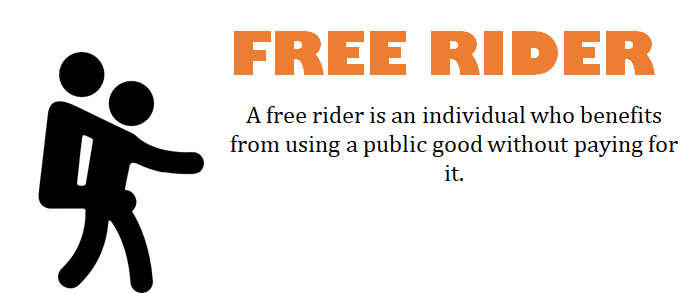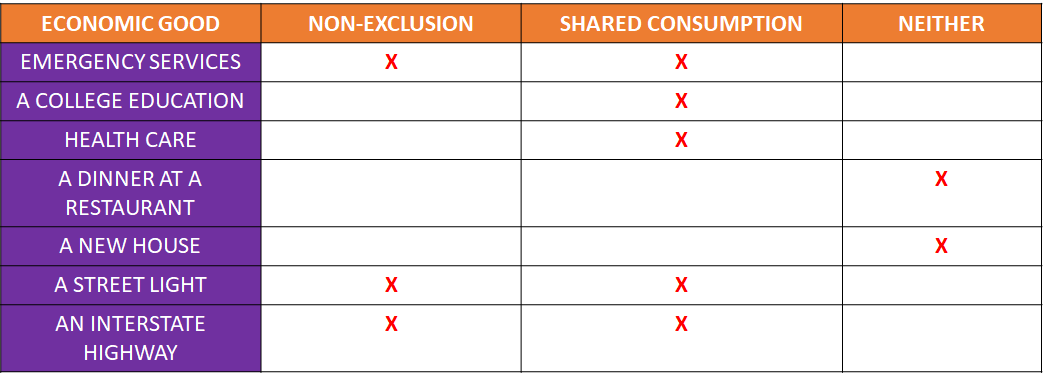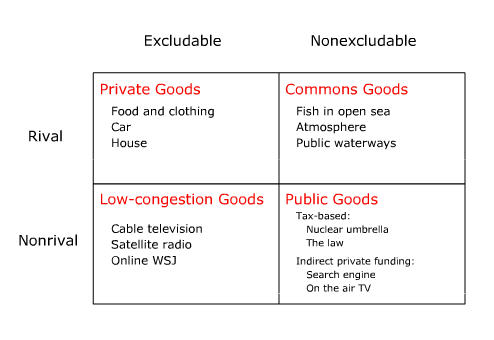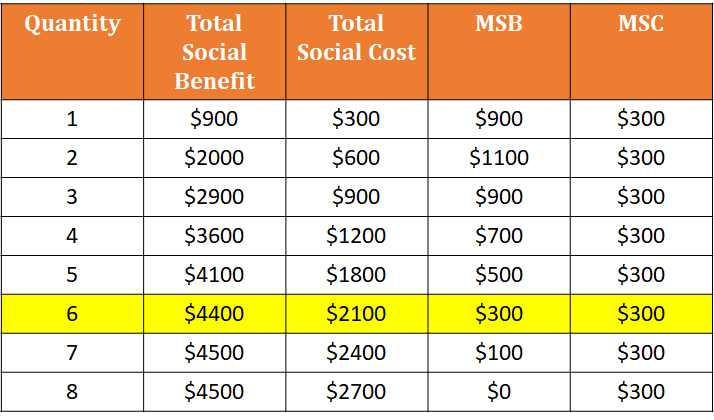J
Jeanne Stansak
dylan_black_2025
AP Microeconomics 🤑
95 resourcesSee Units
Introduction
A public good is an economic good that is provided by the government in the public sector because the free market, or the private sector, has failed to produce them. The public sector is the market for public goods and services provided by the government at the federal, state, and local levels. The private sector is the free market for goods and services where all economic decisions are made by consumers who demand products and by firms that supply products.
Public goods are considered a type of market failure because the free market fails to produce essential goods and services that society needs and wants. With these particular types of goods, there is little to no profit to be made by supplying them, so it is impractical for these firms to produce them.
The Free-Rider Problem
One of the biggest reasons why there is little to no profit to be made is because of the free-rider problem:

The free-rider problem is a problem in economics that with a public-good, many will consumer more of their fair share or pay less of their share of the costs. The free-rider problem is a paradox since if there are no free-riders, the product is by definition not fully public because a public good must be non-excludable, meaning someone who doesn't pay cannot be barred from the benefits. For example, you can't force people to pay to enter a public park, you can just go. Thus, all public goods will experience the free-rider problem.
When some individuals consume more of a shared resource or pay less towards the costs of that resource than they should, it results in an inefficient distribution of goods or services. This occurs when fairness is not upheld in the distribution process. This is considered a type of market failure, since the unregulated market fails to perfectly allocate the resource to consumers since no matter how much you're willing to pay, you can consume a theoretically infinite quantity. Therefore the market is relatively useless since there's no pricing structure.
There are two ways that the government can solve the free-rider problem, (1) they can find new ways to punish free-riders or (2) they can tax all citizens that are eligible to use public goods and use the tax revenue to fund public goods and services. However, punishing free-riders could lead to exclusion, which would make it a non-public good.
What are Public Goods?
In order for a good to be considered a public good it must meet two criteria (1) non-exclusion, and (2) shared consumption (non-rivalry).
Non-Exclusion
Non-exclusion means that everyone can use the good and those who do not pay cannot be excluded from enjoying the benefits. For example, you cannot exclude someone from using a highway. This makes a highway a non-excludable good. By contrast, you can exclude someone from buying an iPhone. Apple could theoretically say to someone "sorry, we're not letting you buy our product" and refuse service. This is also seen in restaurants with "no shirt no shoes no service" policies - they're allowed to exclude! That's not to say public goods don't have rules, for example you can't run around naked in a public park or drive like a maniac on the highway. However, you cannot be excluded from using them in totality.
Shared Consumption / Non-Rivalry
Shared consumption (otherwise referred to as non-rivalry) means that one person's consumption of the good does not reduce the usefulness of the good to others.
Let's look at some sample goods to see whether they meet these two criteria and can be considered public goods:

Those goods in the table above that can meet both criteria can be considered public goods. If it is a good that satisfies one of the criteria, it can be produced either in the public or private sector. If the good has neither characteristics than they are a true private good.
Low-Congestion and Commons Goods
When a good qualifies for one of the markers of a public good but not the other, they fall under the category of either a commons good or a low-congestion good.
Commons Goods
A commons good is a good that is non-excludable, meaning everyone can use them, but are rival, meaning using the good does impact others' accessibility to the good. For example, fish in the open sea are a commons good since anyone can fish (in theory), but if you get a fish, that means another person does not get a fish. Commons goods are victim to the tragedy of the commons in which consumers act in their own self interest and over-consume. For example, we've over-forested wood, a commons good. This is because, in part, it is rival, meaning people want to get it while they can, but anyone is able to obtain it. The tragedy of the commons differs from the free-rider problem. The free-rider problem describes how people are not incentivised to contribute towards the cost of a good since they cannot be excluded nor does their consumption impact other availability. The tragedy of the commons, on the other hand, impacts how we use goods when they are rival, but non-excludable.
/cdn.vox-cdn.com/uploads/chorus_asset/file/10795637/Tragedy_of_the_Commons___Ric_Stephens.jpg)
Low-Congestion Goods
A low-congestion good is a good that is excludable, but is non-rival. This means that you can be excluded for not paying for the good, but your consumption of the good does not affect the availability to others. These are also called club goods. For example, you can be denied cable television if you don't pay for it, but you consuming cable TV doesn't mean someone else can't consume cable TV.
Club goods are quite often underutilized due to their excludable nature. However, when overuse arises, they are then inaccessible or unusable until the congestion of use clears. This is why club goods are often also called low-congestion, because they are oftentimes goods that do not easily get overused.
Here's a chart showing the four types of goods:

How Many Public Goods Should The Government Fund?
We determine how much of a public good to produce by determining where the marginal social benefit is equal (MSB) is equal to marginal social cost (MSC). Let's look at the options for how many parks a city should build:

Based on this data, we would produce 6 public parks since that is where MSB = MSC ($300 = $300).
Browse Study Guides By Unit
💸Unit 1 – Basic Economic Concepts
📈Unit 2 – Supply & Demand
🏋🏼♀️Unit 3 – Production, Cost, & the Perfect Competition Model
⛹🏼♀️Unit 4 – Imperfect Competition
💰Unit 5 – Factor Markets
🏛Unit 6 – Market Failure & the Role of Government
🤔Exam Skills
📚Study Tools

Fiveable
Resources
© 2025 Fiveable Inc. All rights reserved.